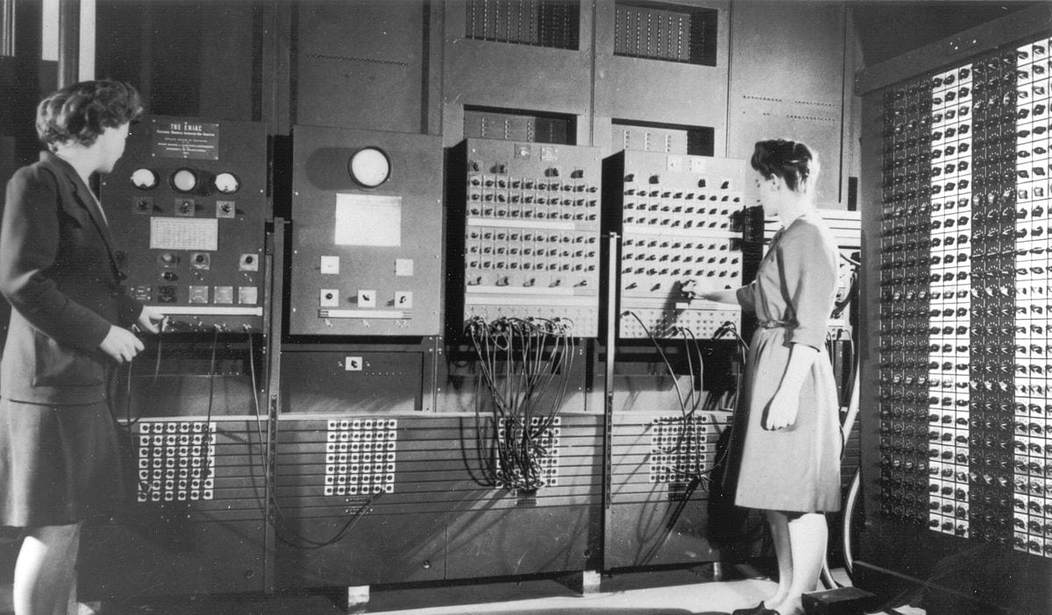The below meme has been floating around Facebook for a while:

For a member of the general public, it looks pretty innocuous: women who did significant things, put together nicely. All of them at least sound familiar to most people who are vaguely computer literate, and I’m sure it’s very heartening to its intended audience of people who want to identify the contributions of women who don’t get the credit they deserve.
It only has one problem: almost none of it is true.
Oh, most of it is close, mind you. Let’s look at the claims made, and the reality.
— Ada Lovelace is a fascinating character. The only legitimate child of Lord Byron the poet, her mother encouraged her mathematical interests in the belief that it would keep her as far from becoming a Romantic poet as possible. Ada became known to the general public when the DoD standard language was named after her on its release in 1980.
Countess Lovelace was chosen because she had worked with Charles Babbage on his Analytical Engine, a purely mechanical computer that he was trying to develop. Ada’s contribution included writing up some programs for the Analytical Engine, for which she is (controversially) credited with being the “first programmer.” (Her Wikipedia entry discusses the controversy.)
But then, there’s the problem. The meme says she “invented computers.”
She didn’t. Babbage did. She was either the first programmer or the first tech writer, and she absolutely was the first person to speculate on the possibility of using the Analytical Engine to do other things besides arithmetic. She was a brilliant woman and deserves to be recognized for her accomplishments.
Hers.
— Hedy Lamarr is, God knows, a fascinating woman who led a fascinating life. As part of that life, she was a sometime inventor, and (under her legal name Hedy Kiesler Markey, and along with George Anthcil) she received Patent 2,292,387: “Secret Communications System”.
It was, technically, pretty cute. The idea was simple — you use a transmitter and receiver that can work on a number of frequencies, and then you set up some scheme so the transmitter and the receiver both change frequencies at the same time. So, you’re sending commands on Channel 13 for a little while, and then by agreement change to channel 2, and then to channel 5. This is called frequency hopping spread spectrum. The idea was a good one, and was completely ignored during the war, but was used later. It’s also one of those patents that has many, many citations in later patents, so it certainly was influential.
Again, though, the meme is way overstated.
Hedy Lamarr did not invent WiFi, Bluetooth, or GPS.
— Admiral Grace Hopper is a little bit of a harder case. Admiral Hopper built a computer program called A0 and invented the word “compiler” to describe it, so she is often credited with “writing the first compiler.” So, I guess I have to allow that this credit isn’t … well, see, Hopper certainly first used the word “compiler.”
But in computer science, a compiler is (now) something that translates a high level language like FORTRAN or Java into executable instructions. Hopper’s A0 was more like what we now call a loader. An A0 program was a sequence of steps that said “load program 42 and run it; load program 96 and run it; then stop” expressed in numbers. The first compiler in its modern sense was John Backus’ FORTRAN.
Admiral Hopper was a true pioneer, no question.
She did many important things — like drive the development of COBOL, and through that, push for standardized high-level languages. She was certainly one of the people who most influenced the way computing evolved through most of the 20th century.
But “wrote the first compiler” ought to have an asterisk.
— The Top Secret Rosies dated back to the days when “computer” was a job description. “Computers” were mathematically inclined people, almost all women, who performed repetitive calculations using desktop calculators following a rigid sequence of operations — very much as an electronic computer does today.
When the ENIAC computer was first being built, Herman and Adele Goldstein and the “Rosies” — Kay McNulty, Betty Jean Jennings (Jean Bartik), Betty Snyder, Marlyn Wescoff, Fran Bilas, and Ruth Lichterman — developed procedures for programming the ENIAC.
This certainly puts them among the first programmers. But Herman Goldstein was there first, and John von Neumann developed the idea of a “stored program computer,” or “von Neumann machine,” and wrote programs for it.
Were they pioneers? You bet. Were they ignored by history for far too long? Absolutely! I think they’re among many women from the ’40s and ’50s who didn’t get the credit they deserved.
But no — they were not the first programmers.
Countess Lovelace? She has a claim to that. (Oh, and contrary to what you hear, the women in Hidden Figures weren’t the first programmers, either.)
So, we have this meme: it names four female honorees, and they are certainly worthy of being honored. But the meme uniformly inflates what they did. (Yes, with some quibbling, I’d even include Grace Hopper.) It credits Ada Lovelace with Babbage’s work; it exaggerates Hedy Lamarr’s work and credits her with the work of dozens or hundreds of others; it misstates the Rosies’ contribution; and it uses a facile summary of Grace Hopper that’s at least questionable, even if it’s fashionable to say.
When applying for a job, padding your resume and inflating your experience is likely to disqualify you even if the truth you include is sparkling. This meme, by inflating these women’s resumes, is doing them no favors.










Join the conversation as a VIP Member